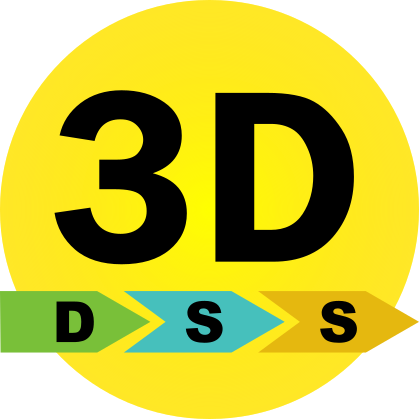The decision model is the core of each decision-making process, as it lists all factors which have an influence on the decision. Our decision model considers the Swiss legislation and consists of 38 attributes that are grouped into three categories. Furthermore, each factor is assigned a main objective that is fulfilled the more the according factor is avoided from building a power line on its top.
| Category | Influencing factor | Main objective |
|---|---|---|
| Environmental protection | Biosphere reserves | Protect the environment |
| Environmental protection | Bird protection areas | Protect the environment |
| Environmental protection | Dry meadow: cantonalimportance | Protect the environment |
| Environmental protection | Dry meadow: national importance | Protect the environment |
| Environmental protection | Flood plains: cantonal importance | Protect the environment |
| Environmental protection | Flood plains: national importance | Protect the environment |
| Environmental protection | Mire biotopes: cantonal importance | Protect the environment |
| Environmental protection | Mire biotopes: national importance | Protect the environment |
| Environmental protection | Nature reserves | Protect the environment |
| Environmental protection | Protection areas according to hunting laws | Protect the environment |
| Environmental protection | Characteristic objects (geotopes) | Protect the landscape |
| Environmental protection | Forests | Protect the landscape |
| Environmental protection | Inventory of nationally protected landscapes | Protect the landscape |
| Environmental protection | Landscapes worthy of protection | Protect the landscape |
| Environmental protection | Mire landscapes | Protect the landscape |
| Environmental protection | Parks: national importance | Protect the landscape |
| Environmental protection | Parks: regional importance | Protect the landscape |
| Environmental protection | UNESO World Heritage Site¨s | Protect the landscape |
| Environmental protection | Vineyards and orchards | Protect the landscape |
| Technical feasibility | Inappropriate geologic underground | Ensure implementability |
| Technical feasibility | Inappropriate relief | Ensure implementability |
| Technical feasibility | Punishment when leaving a valley (valleyness) | Ensure implementability |
| Technical feasibility | S1 groundwater zone: strict | Ensure implementability |
| Technical feasibility | S2 groundwater zone: less strict | Ensure implementability |
| Technical feasibility | Surface waters: lakes | Ensure implementability |
| Technical feasibility | Surface waters: rivers | Ensure implementability |
| Technical feasibility | Underground facilities | Ensure implementability |
| Technical feasibility | Existing transmission lines | Increase bundling |
| Technical feasibility | Wide roads and railways | Increase bundling |
| Technical feasibility | Natural hazard zones: avalanches | Decrease risks |
| Technical feasibility | Natural hazard zones: floodings | Decrease risks |
| Technical feasibility | Natural hazard zones: landslides | Decrease risks |
| Technical feasibility | Natural hazard zones: rockfalls | Decrease risks |
| Technical feasibility | Natural hazard zones: sink holes | Decrease risks |
| Urban planning | Areas within noise threshold of 40 dBA | Preserve living space |
| Urban planning | Cultural heritage: high importance | Preserve living space |
| Urban planning | Cultural heritage: low importance | Preserve living space |
| Urban planning | Industrial areas | Preserve living space |
| Urban planning | Potential visibility of new transmission towers | Preserve living space |
| Urban planning | Public core areas | Preserve living space |
| Urban planning | Residential / work / mixed areas | Preserve living space |
| Urban planning | Tourism areas | Preserve living space |
| Urban planning | Arable land | Protect the landscape |
| Urban planning | Historic places and areas | Protect the landscape |
| Urban planning | Gravel pits | Ensure implementability |
| Urban planning | Inappropriate aspect | Ensure implementability |
| Urban planning | Special railways | Ensure implementability |
| Urban planning | Infrastructure plants | Increase bundling |
| Urban planning | Public transport areas | Increase bundling |
| Urban planning | Tunnels | Increase bundling |
| Urban planning | Airports | Decrease risks |
| Urban planning | Cable cars | Decrease risks |
| Urban planning | Military sites | Decrease risks |
